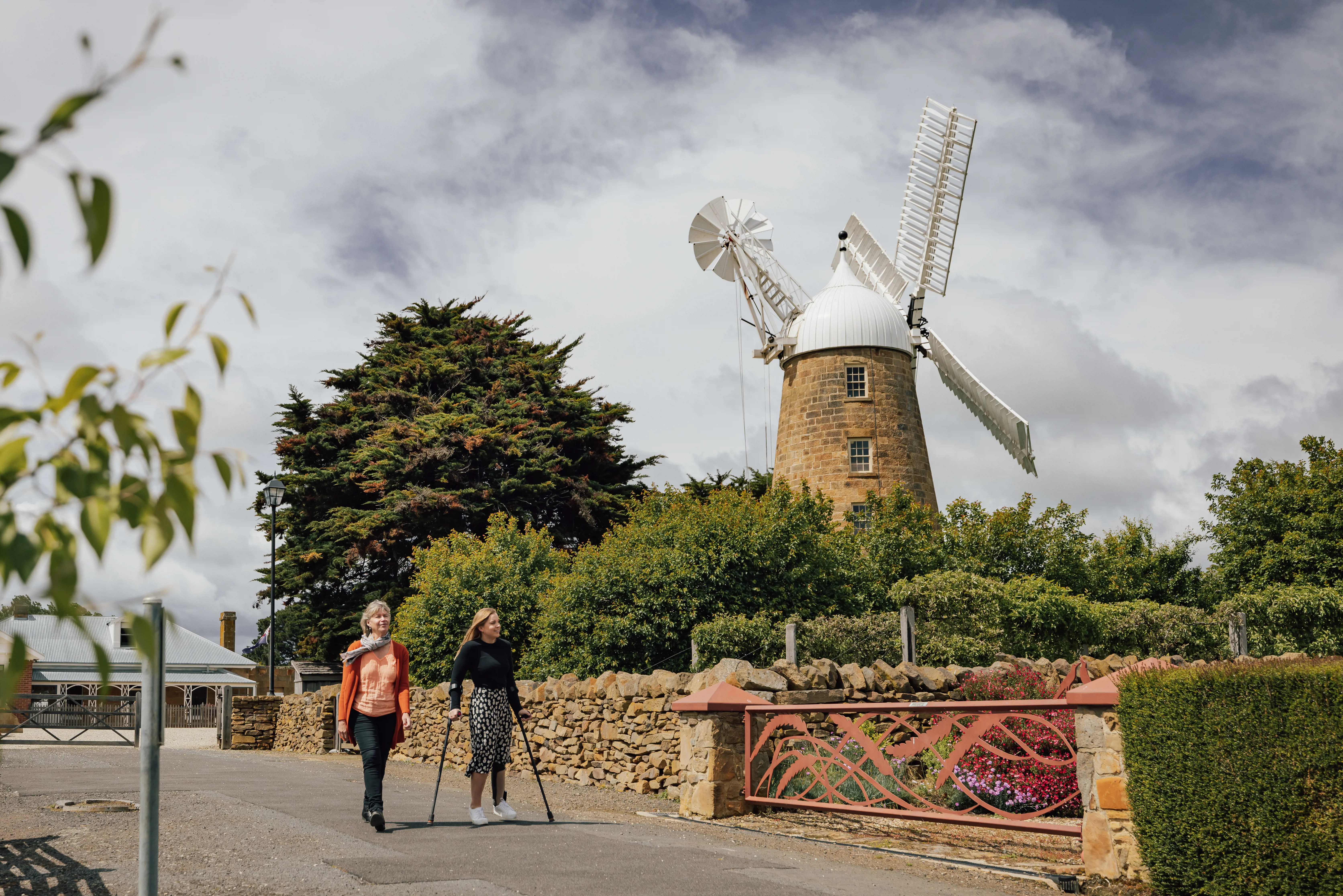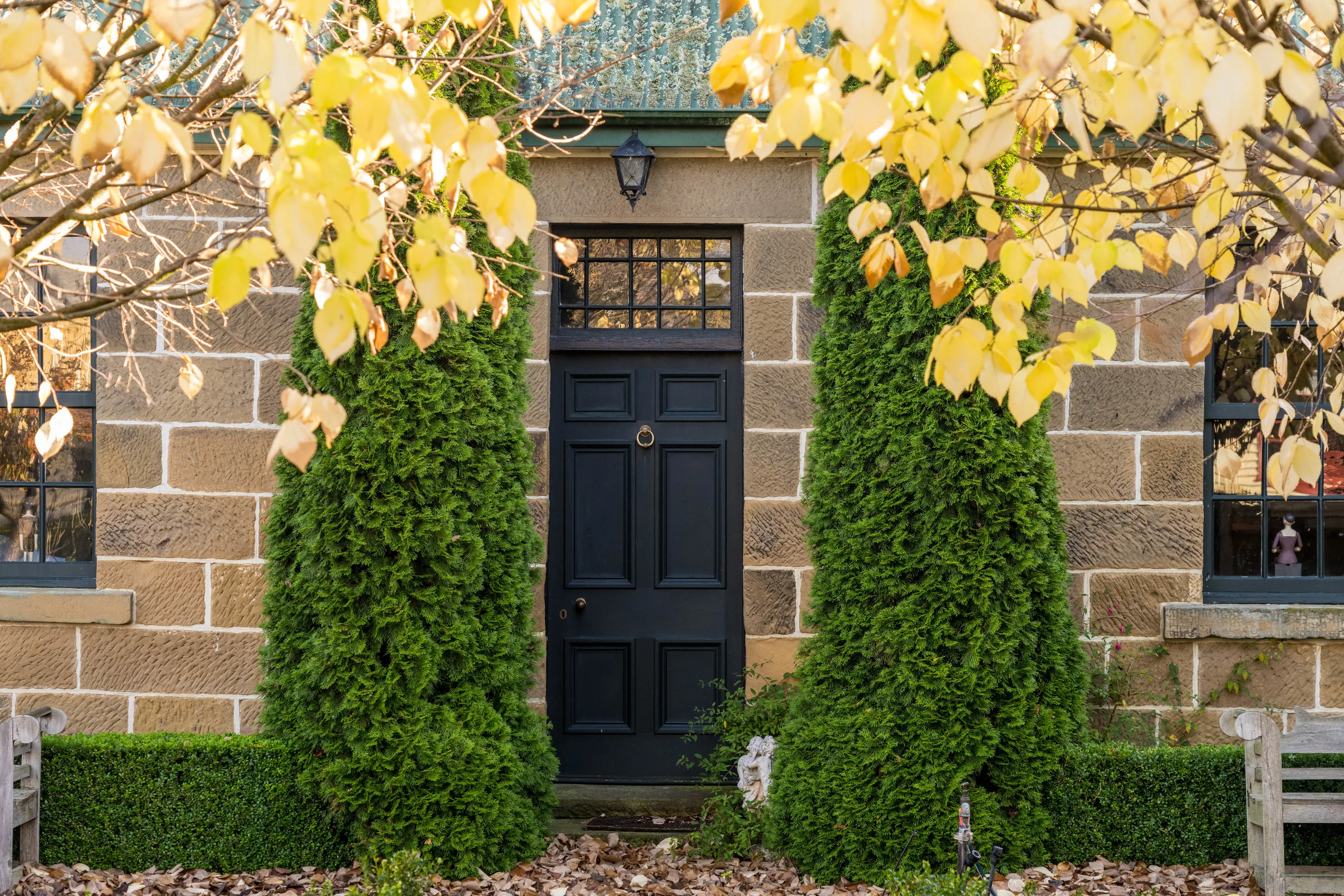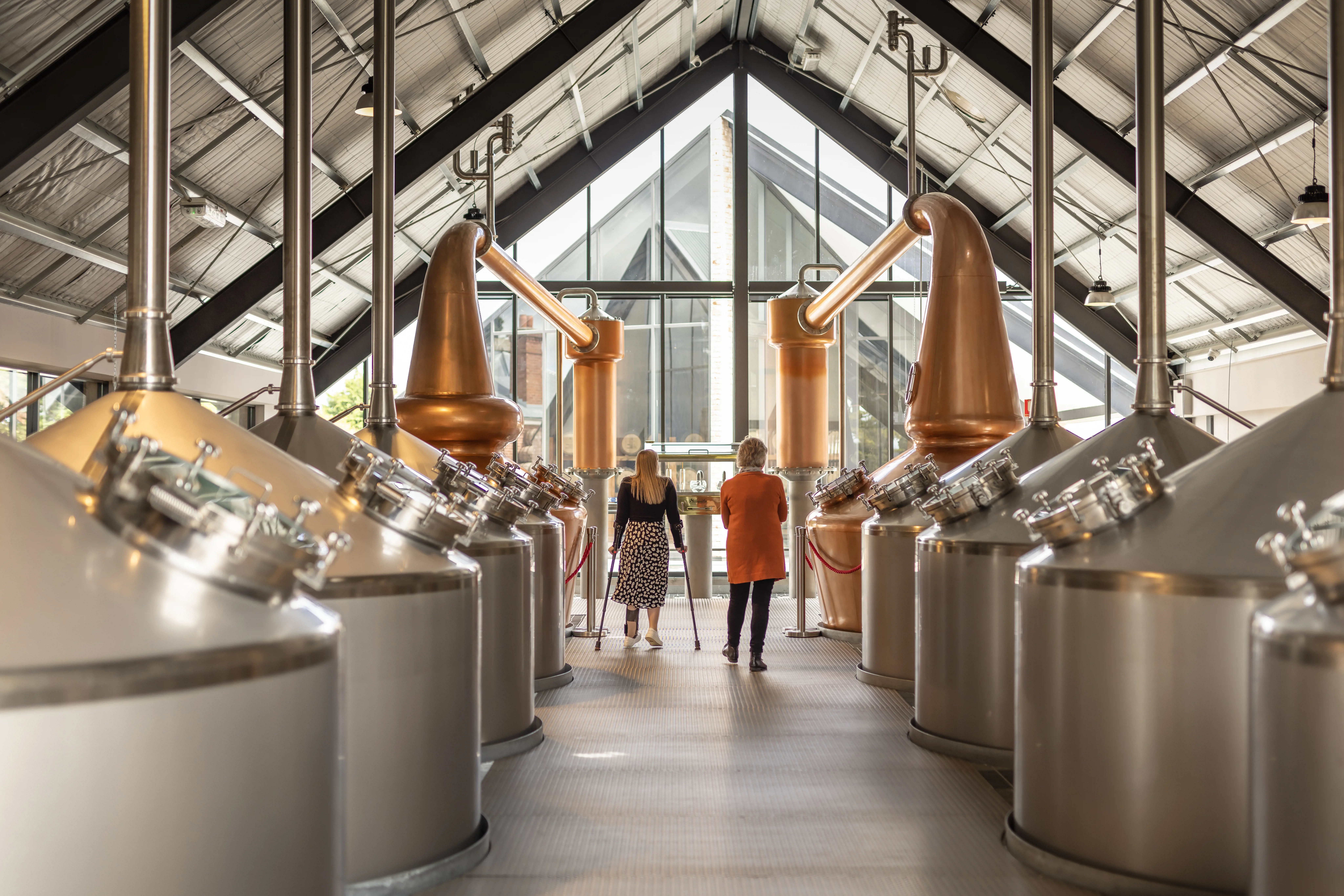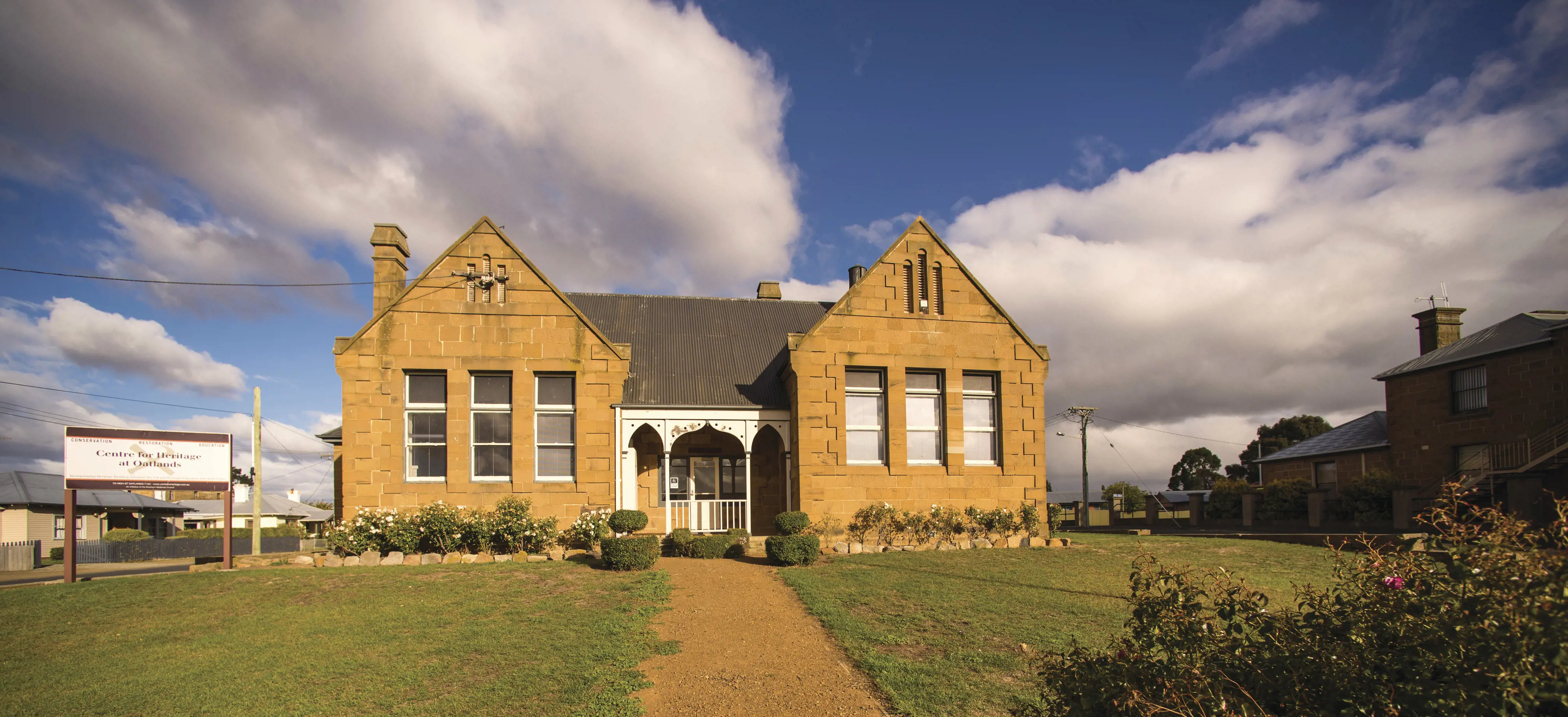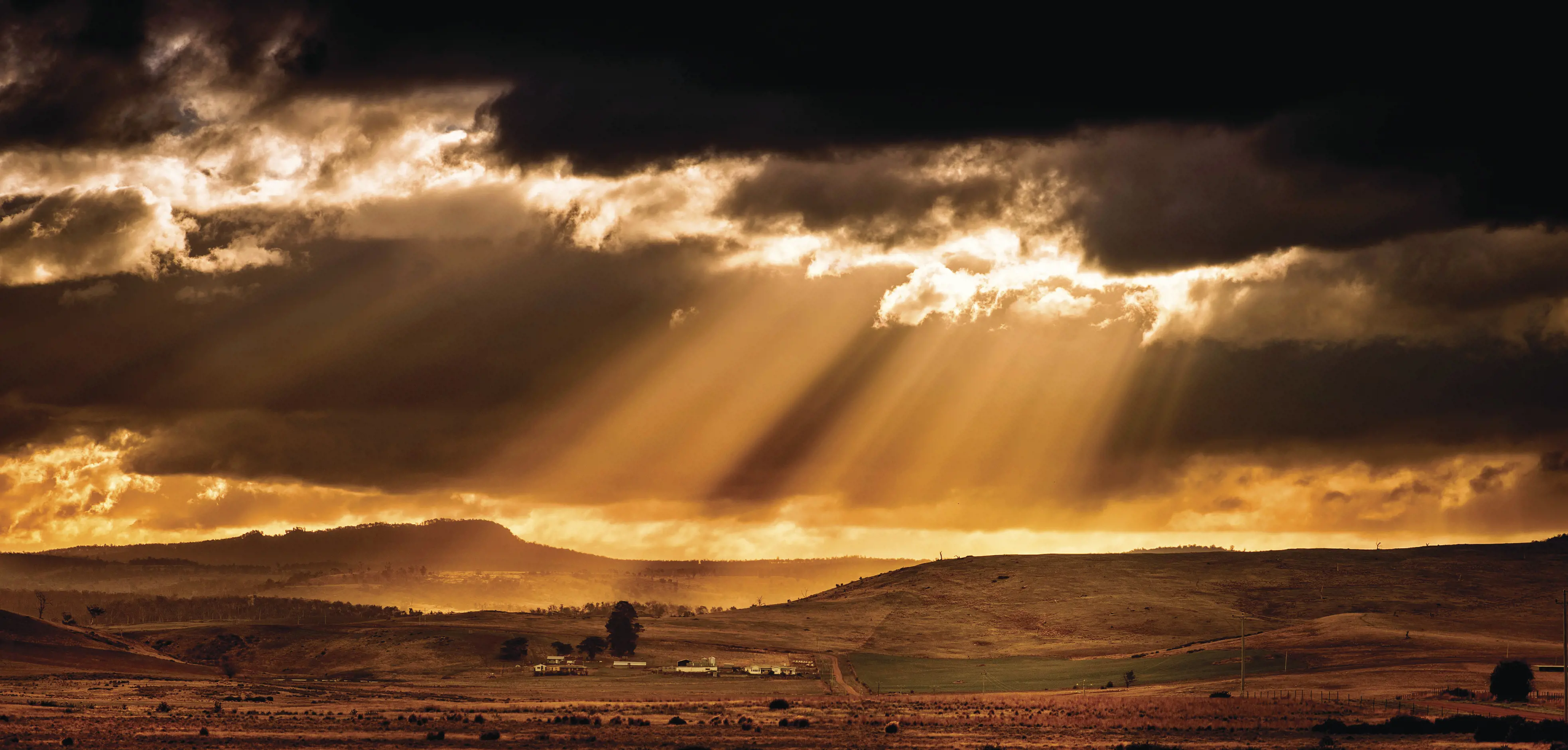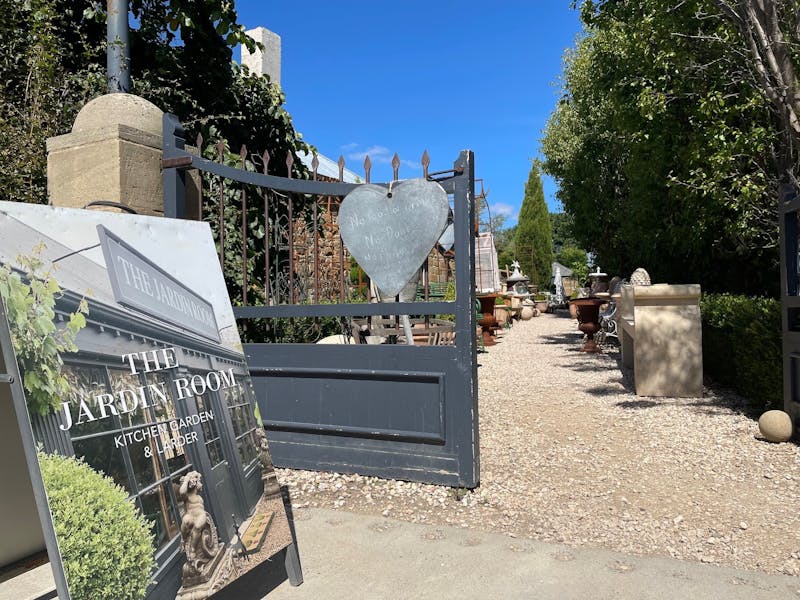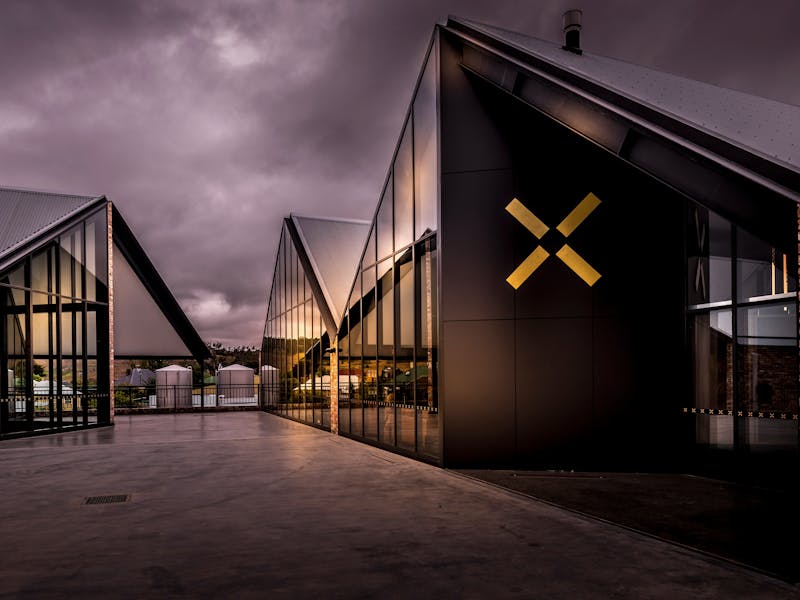
History looms large in Oatlands, the town with Australia’s largest collection of sandstone Georgian buildings.
There are 150 of them, mostly convict-built, including 87 along the main street. Step behind the facades to find antique shops, cafés and bars.
There’s further architectural beauty at St Paul’s Catholic Church, which was designed by Augustus Pugin, the English architect who created Big Ben.
The most prominent building in town is Callington Mill, Australia’s third-oldest windmill (1837) and now the centrepiece of the Callington Mill Distillery.
Oatlands developed around a military precinct in the late 1820s, and its impressive courthouse was the only Supreme Court in regional Tasmania, which meant it could deliver death sentences. Eighteen convicts were executed inside the town’s large gaol, and the walls and archway are still standing.
On the edge of town is Lake Dulverton, a popular recreation spot dotted with half-submerged sculptures of cows. A 7km walking trail follows its shores to the village of Parattah.
Where
Oatlands is a 1hr drive (83km) north of Hobart, and a 75min drive (116km) south of Launceston.
Insider tips
- Grab the “Oatlands Key” from participating businesses along High Street (or the council chambers) to gain entry to the 1829 Supreme Court, the gaoler’s residence and the 1827 Commissariat building.
- Head to the renovated 1830s country pub, The Kentish Tasmania, for all-day dining. Or stock up on premium Tasmanian-crafted honey, artisan chocolates and preserves at Tidbit and Morsel – another quaint shop along the heritage sandstone streetscape of High St.
